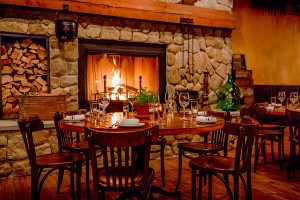Five Reasons to Revisit The Salty Pig
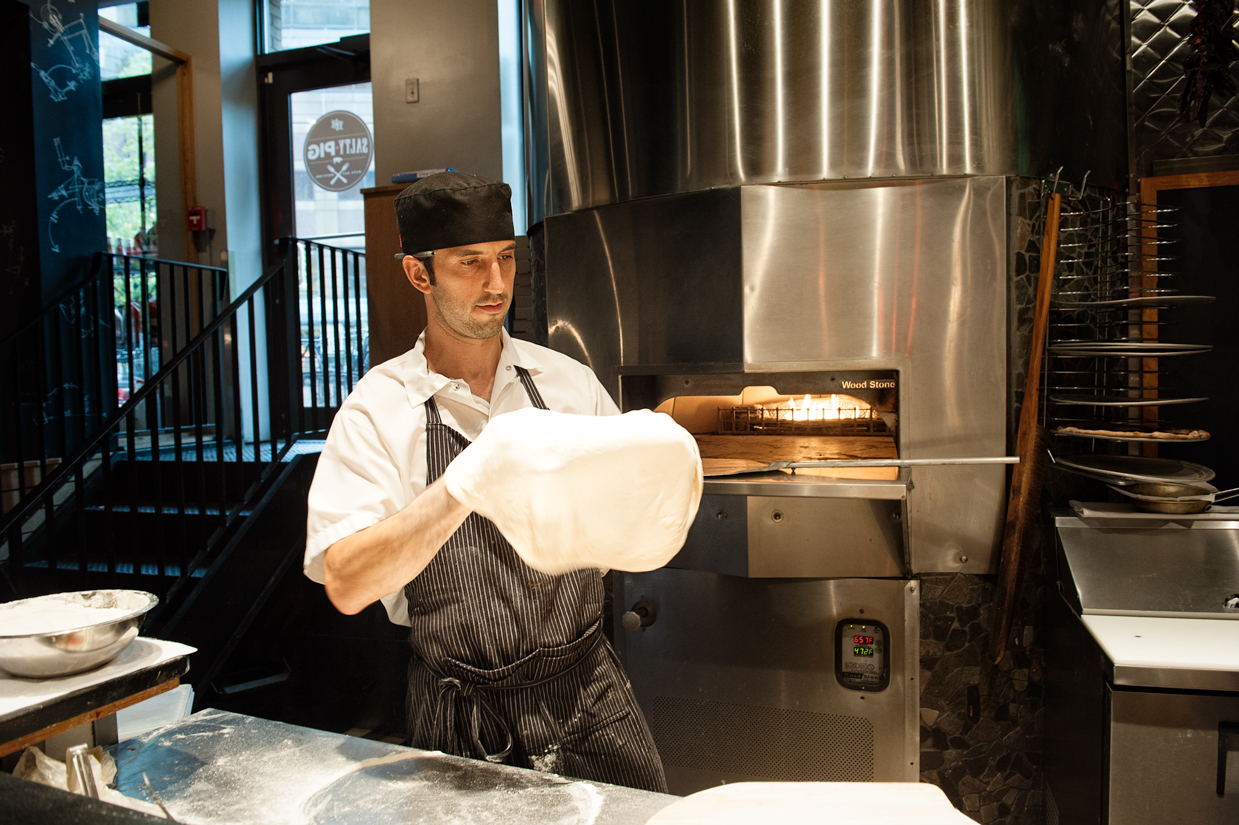
Chef Kevin O’Donnell at The Salty Pig pizza oven. Photo by Chelsea Kyle
The story of The Salty Pig’s three-year evolution boils down to a chance encounter across the globe.
When chef Kevin O’Donnell moved to Italy after attending Johnson and Wales, he somehow bumped into the only other New Englander in Orvieto, Michael Lombardi, who was interning at a neighboring restaurant after graduating from the Culinary Institute of America. They struck up a quick friendship and spent the subsequent years spontaneously training under the same mentors, in the same foreign locales.
“We’ve been sort of following each other around the world,” O’Donnell says. After Italy, the two spent time under Mark Ladner at Del Posto in New York, then L’Office in Paris, before they both became homesick and decided to move back to the U.S. After a brief stretch at Gwynnett St. in Brooklyn, Lombardi found himself calling up his old friend in Boston.
Lombardi and O’Donnell have now been working together at The Salty Pig since 2013, and their rapport has reached a galvanized peak with innovative concepts like their Red Sauce Sundays, a more daring charcuterie program, and pasta that demonstrates their mutual training abroad. Here are five reasons why The Salty Pig just keeps getting better and better.
1. Red Sauce Sundays
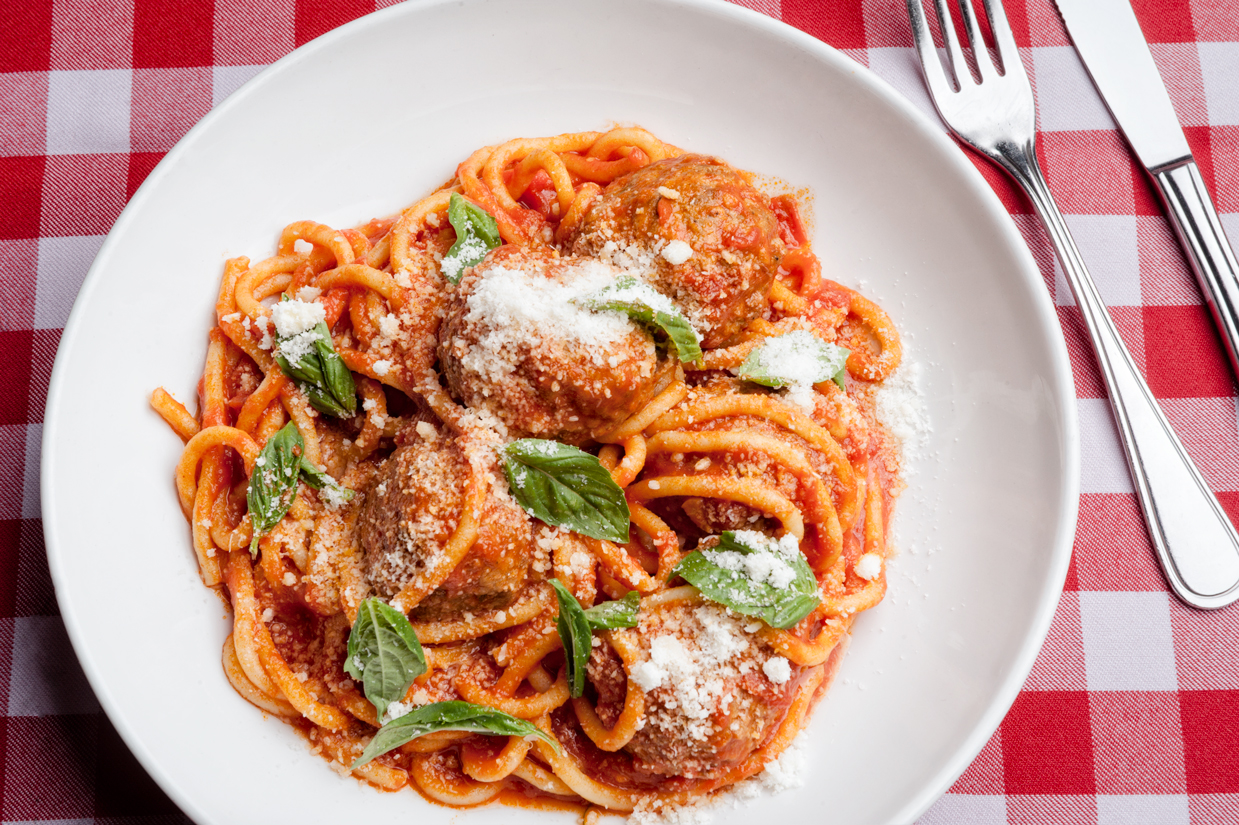
Spaghetti and meatballs on the menu during Red Sauce Sundays. Photo by Chelsea Kyle
Step into The Salty Pig on Sundays and you’ll think you’ve tumbled into the North End circa 1970. Tables are cloaked in vinyl red gingham tablecloths, candles are aglow in vintage Chianti bottles, and servers are outfitted in starched white button-downs. Co-owner Mike Moxley (aka “DJ Guru Extraordinaire”) is lording over a playlist monopolized by Frank and Dean. And then there’s the food: crispy calamari, garlic knots, Caesar salads, and heaping bowls of pasta swimming in red gravy.
“Both Michael and I love eating like that,” O’Donnell says. “The idea really came about because when we had off on Sundays we would both crave chicken parm and spaghetti and meatballs. We’d either make it at home or go to Anchovies or one of those other rustic, nothing-fancy red sauce spots. Growing up, Sundays were family dinner day and that’s what we ate. We started thinking, we can’t be the only people who crave that kind of comfort food.”
The calamari might have a fancier tempura batter and the noodles may be all house-made (never dried), but outside of that, O’Donnell has captured the cheeky nostalgia of the revered red sauce joint. “Even the big wooden bowls we use for the Caesar salads are reminiscent of something your grandmother would have served,” O’Donnell says. “We rub a clove of garlic around the rim and make the dressing in the bowl, just like they would have back in the day.”
2. Salty Pig Parts
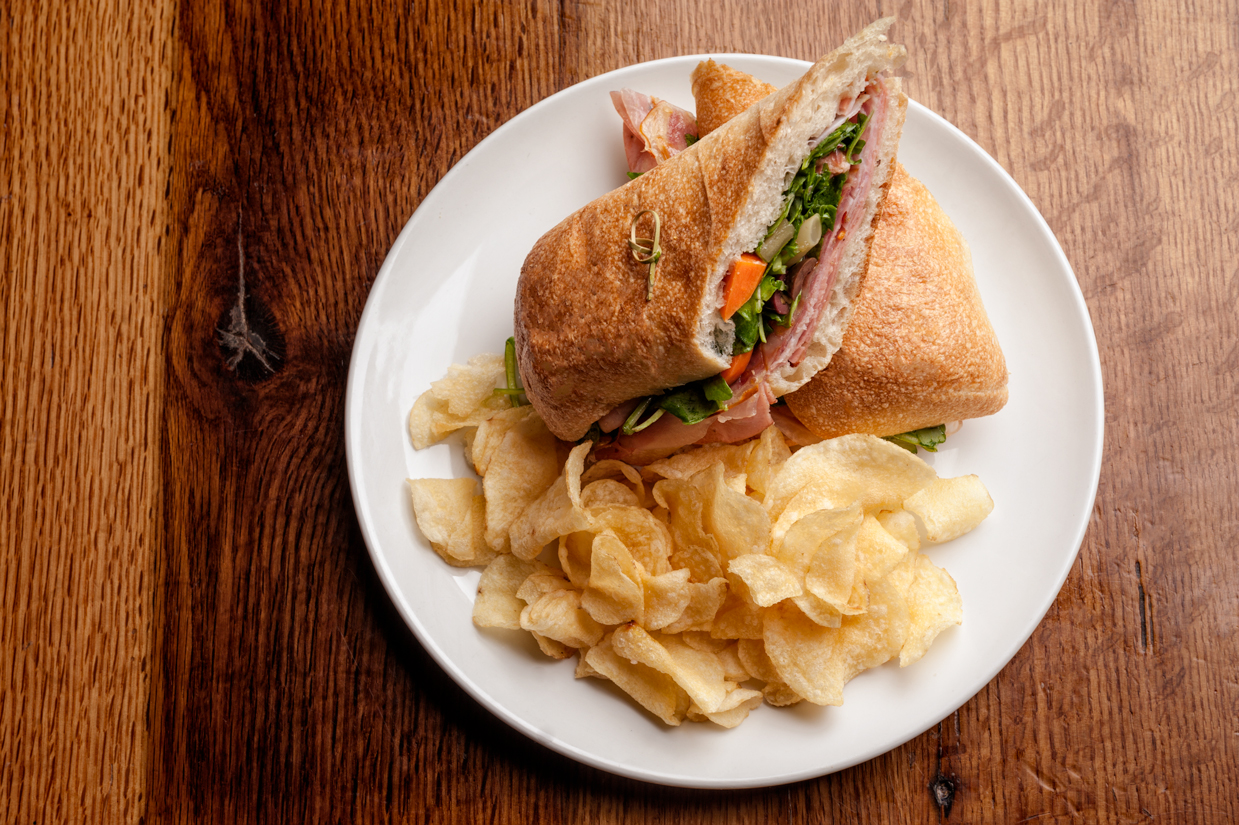
The Salty Pig Part sandwich. Photo by Chelsea Kyle
O’Donnell has only been with The Salty Pig for two of its three-year existence, but the chef’s way with sausages, patés, terrines, and all manner of smoked and cured meats, has given the restaurant’s namesake a bit more gravity.
“A lot of my inspiration and passion comes from Italian,” O’Donnell says. “It’s not any one particular region, but any type of rustic cooking really. I had an opportunity while I was there to stage at a salumeria in the mornings. They would get in like four to five pigs a day, sides of veal, and all these animals. They let me be a fly on the wall and just watch. Just to be there to ask questions and hear their little tricks on how to use the whole animal, it definitely helped me to do it on my own.”
The aptly named “Salty Pig Parts” menu changes often and includes imported prosciuttos, Speck hams, and salamis to complement O’Donnell’s range of eclectic offerings (i.e. smoked tongues, pork head coppa, etc.). Many of these can be found on the Salty Pig Parts sandwich, a lunch-only option, that’s like O’Donnell’s Italian twist on the Louisiana muffuletta—a rotating selection that is piled high with smoked Scamorza, vegetable giardiniera, fresh oregano, baby arugula, and olive oil, all on top of an Iggy’s ciabatta roll.
3. Pizza

Photo by Chelsea Kyle
“There are three keys to great pizza,” O’Donnell says. “In an ideal world, dough should be slow proofed, or fermented for at least two days. When you’re stretching it, it needs to be at room temperature. You don’t want cold dough. And finally, when cooking the pizza, it has to be at a really high temperature; at least 600 degrees.”
The Salty Pig easily passes all three criteria. But O’Donnell doesn’t end there. In his two years at the helm, he’s never ceased tinkering with the pizza dough recipe. “We’re constantly trying to evolve the dough and how we cook it,” O’Donnell says. “That even goes for something as minute as the grams of salt per batch. We’ve changed it so many times, but I really do think it’s getting better.”
Same goes for the toppings, as O’Donnell supplements everyday offerings like a simple Margherita with an ever rotating selection of seasonal vegetables and artisan meats. Take for example The Salty Pig’s new Pizza Rustica with braised escarole, mozzarella curds, cooked cannelini beans, a prosciutto crema (ground prosciutto ends with sour cream), and a lemon confit inspired by a dish O’Donnell encountered at Oleana. “Biting into it—it’s like nothing you’ve ever eaten. It just gives the pizza another level of excitement.”
4. Expert Cocktails

Photo by Chelsea Kyle
The Salty Pig has always been an under-the-radar hub for great local beer, with draft selections from Pretty Things, Jack’s Abby, and Allagash, but under the direction of general manager Ines Santos, the cocktail program is finally coming into its own. That breakthrough has started with a change in philosophies, as Santos and her staff are implementing more house-made syrups, shrubs, and bitters, and honing in on a focused Mediterranean concept (think Italian digestifs for added bite and Lambruscos for bubbles).
Santos has also given her bartending team the freedom to create more seasonal cocktails to accompany classics like a Pimm’s Cup and a shandy with peach puree. This fall, look out for the “Freaks and Greeks” made with resiny Greek Mestiha, celery, basil, and prosecco or bartender Jill Caron’s “Apple of My Eye.”
“We were revamping the menu toward the fall and I was thinking about creating something that I would want to drink while apple picking,” Caron says. “It needed to be something that was light on its feet and that wouldn’t fill you up. So, I put together Slow and Low’s Rock & Rye— because who doesn’t love whiskey and apples—honey, lemon juice, and an apple cinnamon shrub that I made by muddling together some nutmeg, granny smith apples, whole cinnamon sticks, apple cider vinegar, sugar, and hot water.”
5. The Simplicity of Pasta
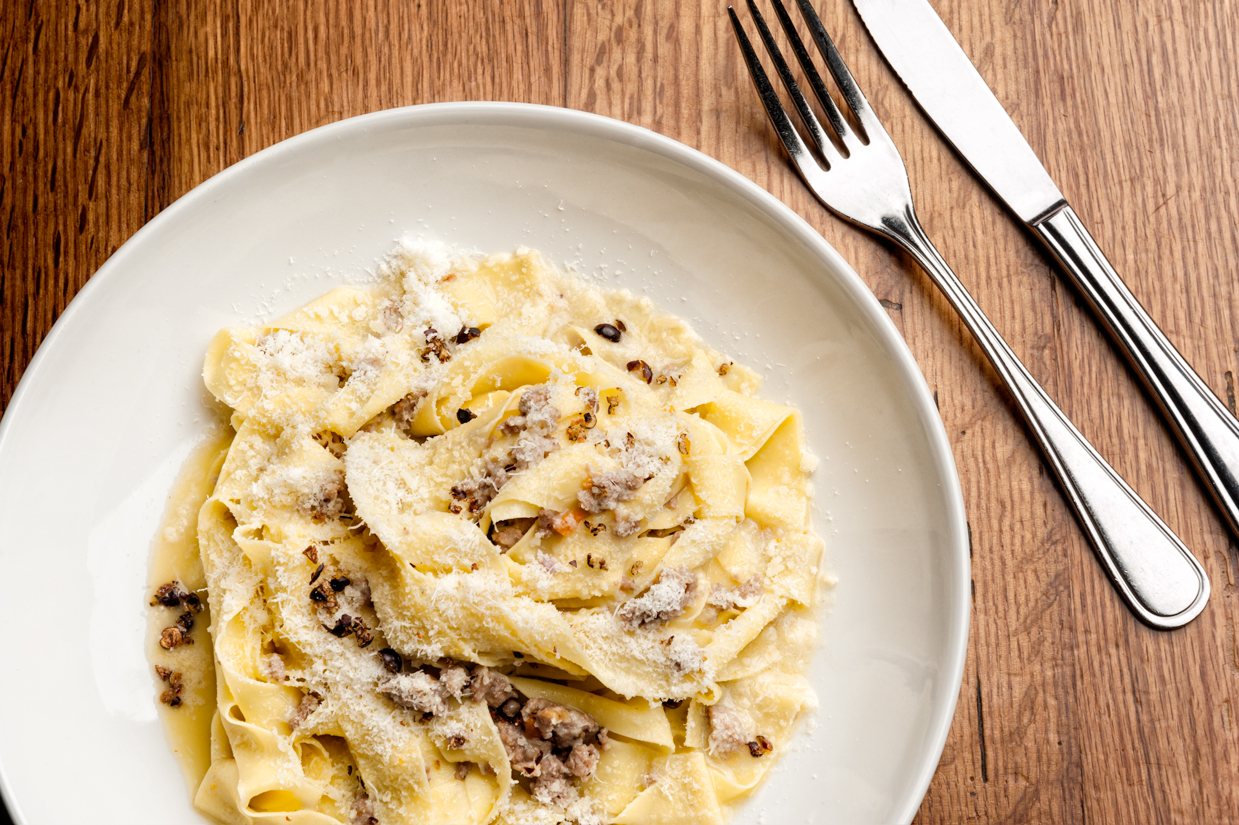
Tagliatelle with wild boar ragu. Photo by Chelsea Kyle
After two tours at Ristorante Zeppelin in Italy, as well as a stint at Mark Ladner’s Michelin-starred mecca, Del Posto, it should come as no surprise that O’Donnell has a way with pasta. From gemelli to orecchiette, everything at The Salty Pig is made fresh in-house and exhibits a confident restraint—something which stems from both O’Donnell and Lombardi’s wide regional knowledge of Italian cooking. Take for instance a campanelle with smokey guanciale and Roman-style tripe or The Salty Pig’s new, Umbrian-inspired winter tagliatelle with wild boar ragu.
For the ragu, O’Donnell starts by making a sofrito with a generous glug of olive oil, then adds a a mixture of ground and diced Canadian wild boar, for texture. Afterward, he cooks it down with bay leaf, juniper berry, white wine, and pork stock, and walks away, letting it simmer for hours. The only flourish on a nuanced, but otherwise straight-forward presentation, is a showering of pecorino cheese and extra virgin olive oil.
“The dish itself is so so simple, which is really what makes Italian food so beautiful,” O’Donnell says. “The flavors are very rustic and very true to Central Italian cooking. Wild boars in Italy are known to forage for truffles and juniper berries, so the two are kind of a classic combination.”
130 Dartmouth St., Boston; 617-536-6200 or thesaltypig.com.
